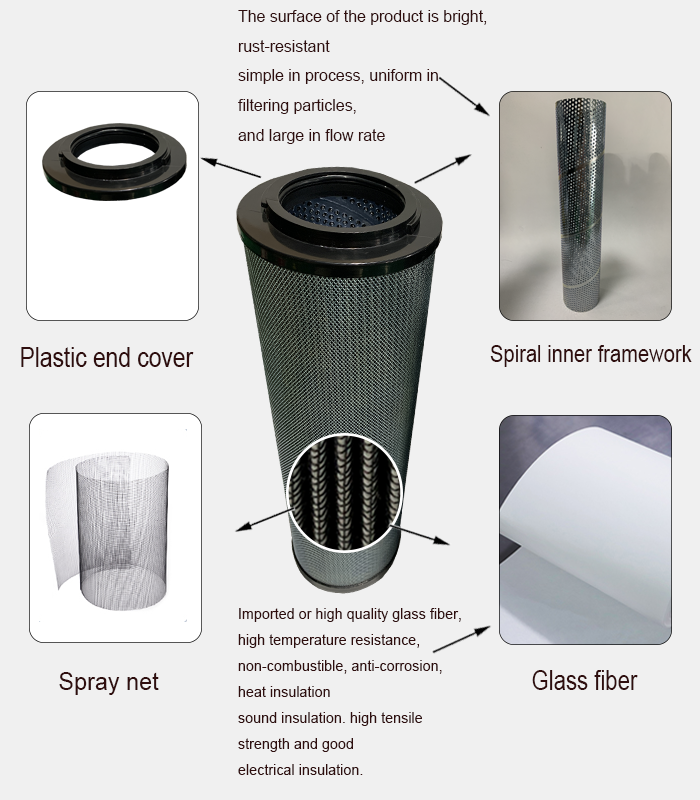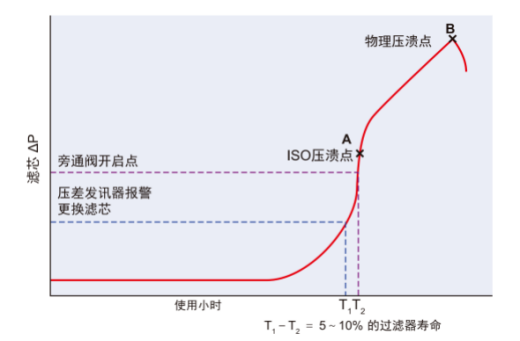What is the dirt holding capacity and the crushing pressure of the filter element?
Dirt-Hold Capacity
The dirt holding capacity is often referred to as the dirt holding capacity, which is the ability of the filter element to capture and intercept solid particulate pollutants from the beginning of use to when the pressure difference reaches the specified end of use. It is usually expressed in grams (g). This indicator is measured in accordance with ISO16889 through the Filtration Performance Test of Multi-phase Test.
Filter element collapse pressure (Collapse and Burst Resistance)
Measured in accordance with ISO2941, when the filter element is blocked by contaminants, it can maintain the maximum pressure difference between upstream and downstream without structural damage.
The collapse value of the filter element is two different differential pressure values:
The differential pressure-point A defined by the ISO2941 international standard: the differential pressure curve rises sharply and is close to vertical. Indicates that the filtering performance is reduced;
Physical crushing pressure difference-point B: the internal parts that make up the filter element are damaged (such as the skeleton crushing);
The correct support structure of the filter element ensures the maximum crush value of the filter. A bypass valve is usually installed on the filter housing to prevent ISO crush (point A), and the opening pressure of the bypass valve is less than the ISO crush value of the filter element. The bypass valve is used to protect the filter and the system to avoid excessive pressure difference and/or the filter element collapse caused by this.
The pressure difference of the filter rises with the increase of the contaminants retained by the filter material. Before the bypass valve is opened, the pressure difference indicator sends a signal to indicate that the filter element should be replaced.
The correct support structure of the filter element ensures the maximum crush value of the filter. A bypass valve is usually installed on the filter housing to prevent ISO crush (point A), and the opening pressure of the bypass valve is less than the ISO crush value of the filter element. The bypass valve is used to protect the filter and the system to avoid excessive pressure difference and/or the filter element collapse caused by this.
The pressure difference of the filter rises with the increase of the contaminants retained by the filter material. Before the bypass valve is opened, the pressure difference indicator sends a signal to indicate that the filter element should be replaced.
Our products through the following test:
ISO 2941 Collapse & Burst Resistant
ISO 2942 Material Compatibility with Fluids
ISO 2943 Material Compatibility with Fluids
ISO 3724 Flow Fatigue Characteristics
ISO 3968 Pressure Drop vs. Flow Rate
ISO 16889 Multi-pass Performance Testing
Main brand:
Replacement filter: HYDAC ,PALL,MP-FILTRI,EPE,Vickers,ARGO,FILTREC,HY-PRO,INTERNORMEN,PARKER,TAISEIKOGYO

